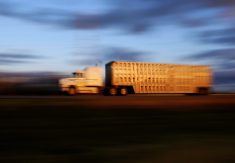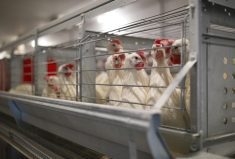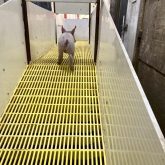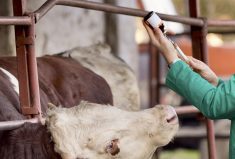Many questioned whether it would work, but Maple Leaf Foods says open housing is a superior way to raise sows — and will have that system in all of its barns years before it becomes mandatory.
“This is part of our vision to be the most sustainable protein company on Earth — part of that is better care for animals,” said Greg Douglas, a veterinarian who is the company’s vice-president of animal care.
“We will have transitioned all of our stalls to open sow housing by 2021.”
Read Also

Revamp started on Canada’s national pig code
The code that sets Canada’s standards care and handling of pigs is up for review, a process expected to be compete by 2028.
Under the National Code of Practice for the Care and Handling of Pigs, open housing has been mandatory for all new sow barns in the country since 2014. Existing ones were given until 2024 to convert to open housing, but Maple Leaf Foods is already using the system for 40,000 of its 70,000-pig herd. Retrofitting barns has cost the company about $55 million, with most using ‘static’ systems, in which sows enter a barn in groups of 40 to 60, are bred at the same time, and farrow together. Since they are kept together all the time, the animals get to know each other — and so do their handlers.
“I know it might sound soft, but they get to develop relationships with the animals, see how they are doing, and follow their progress,” said Douglas. “They can see them without being inside crates and up against bars and the like. They can see their faces and their eyes. It’s the better way to provide care. I think people want to operate in these systems and appreciate it.”

The company regularly conducts employee surveys, and no one says they would want to go back to gestation stalls, he said.
Maple Leaf began researching various open sow housing systems used around the world a decade ago, and started transitioning five years ago.
Skeptics predicted there would be a big jump in aggression in loose housing systems, but Douglas said he has seen very little of that.
“If you have aggression or too much aggression, then you have a density issue,” he said. “Our barns are very quiet. We don’t see much aggression past an odd squeal. It is no more than we would see in a variety of scenarios.”
Rather, open housing has improved outcomes because workers know the pigs better, he said.
“They get to spend more time with the animals and see how they’re doing from an animal health standpoint in terms of disease, lameness and give them better care,” said Douglas. “It’s had all kinds of benefits from our standpoint.”
In Maple Leaf’s open housing system, there is little confinement for the sow. Some of that is because of new technologies, such as mobile ultrasound for detecting pregnancies.
“It gives us an opportunity to not house them inside crates while we can still manage them and follow their gestation along,” said Douglas. “Sometimes we made these things more complex with what we thought were highly managed systems with the animals all in crates, when in fact we can be more precise with other systems.”
All Maple Leaf sows in open housing reside in Manitoba, which is also home to one of its processing plants. But the company also has a plant in Lethbridge and company officials regularly meet with contract producers in Alberta to talk about transportation, responsible antibiotic use, and animal care.
“And as we have those chats, they start to understand that the future is in higher welfare, sow-friendly systems and more of them are looking to projects like the national sow housing project,” said Douglas.
Maple Leaf Foods has rebuilt 31 barns so far. Animals are sent to a training facility during the rebuild to acclimate both pigs and staff to the new system and individual electronic feeders. (The feeders prevent a competitive feeding environment while giving control over each pig’s ration.)
“We can monitor whether one animal picks up on the new system right away or if another animal takes a lot longer to learn the system,” Douglas said. “We will monitor that with computers, where we can tell which animals go through the system, and then if an animal needs more time or if it needs human help to show it the way, then we do that.”
Some barns have been retrofitted twice. A year and a half into the conversions, the company opted for what it describes as an “advanced open sow housing system,” which it says has cut down breeding stall time to seven to nine days (from more than a month previously). The company returned to refit the already converted barns.
It is also using high welfare trailers, which is essentially a truck with an elevator. The whole floor is an elevator that moves up by cables.
“As soon as (one floor) is full, the hydraulics take it up to the third level,” said Douglas. “It happens again on the second level. And then we load the lower level, and then when we get to the destination or the plant, the reverse happens.”
This means handlers no longer need to push animals up ramps, the pigs are no longer slipping or sliding on ramps, and there’s less stress on workers loading or unloading them.
The company’s new approach to animal welfare “takes a completely different mindset,” said Douglas.
“This is a journey really. We’ll be trying all kinds of new technology in the future.”
– With files from Glacier FarmMedia reporter Alexis Stockford
















